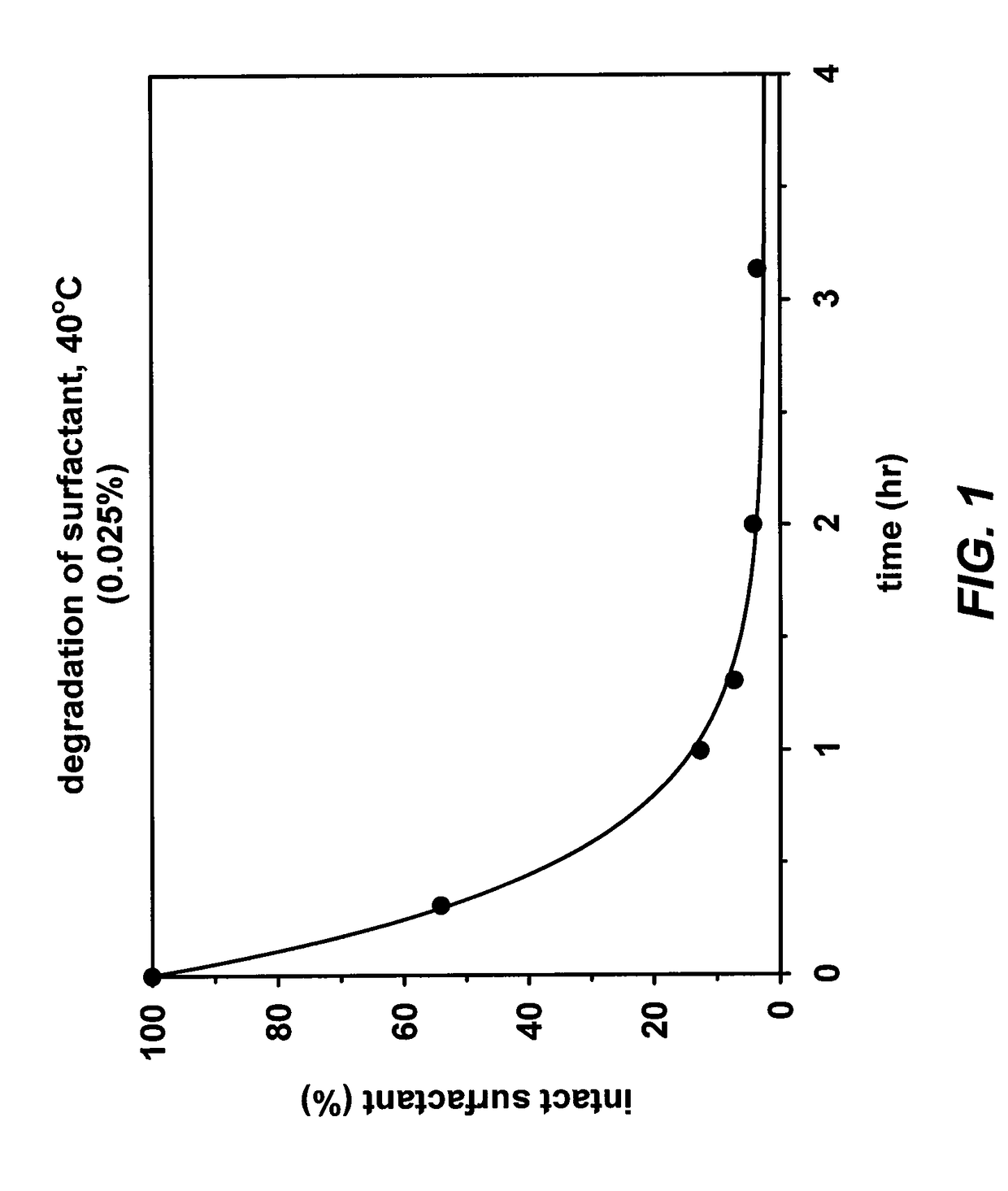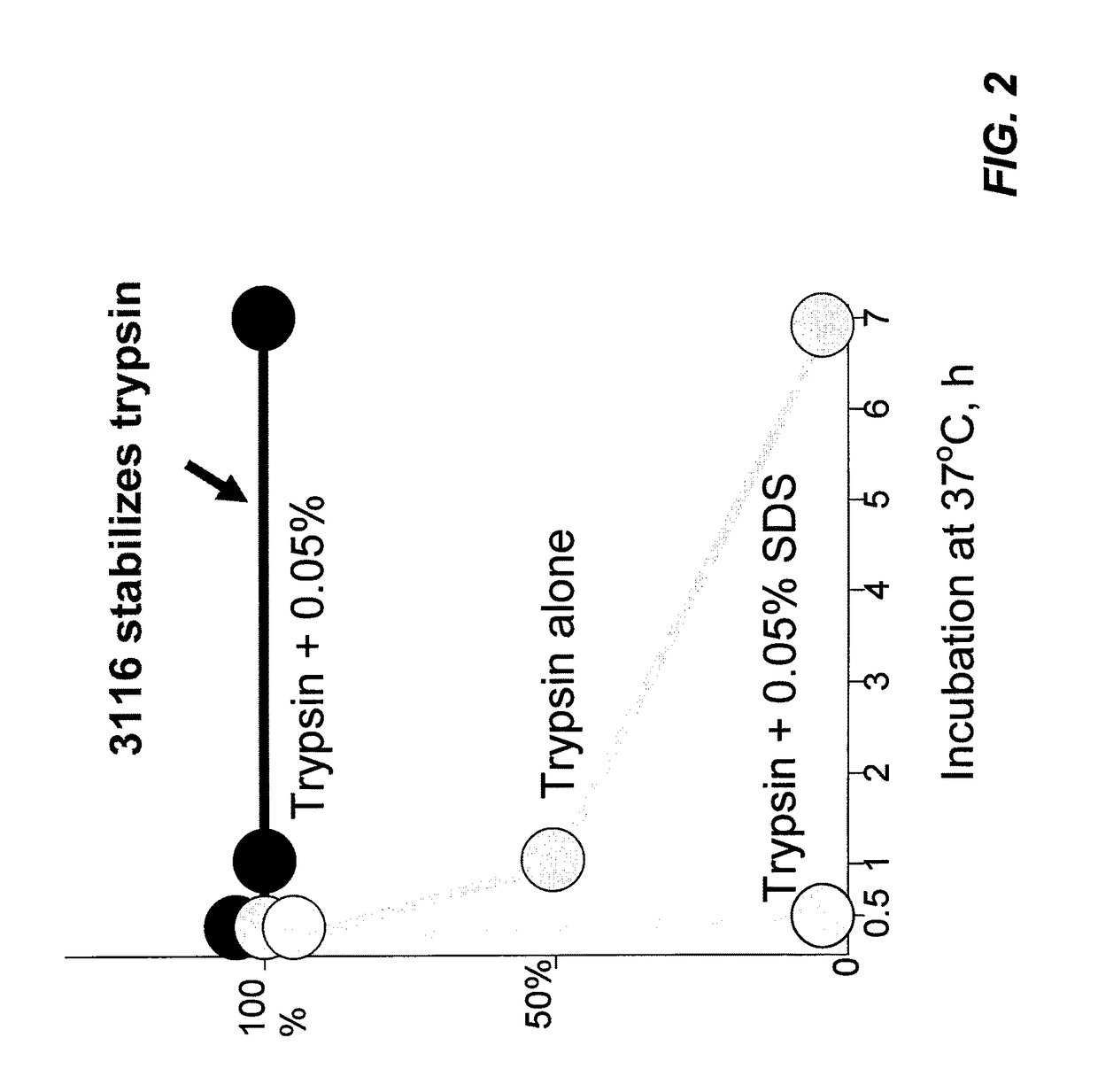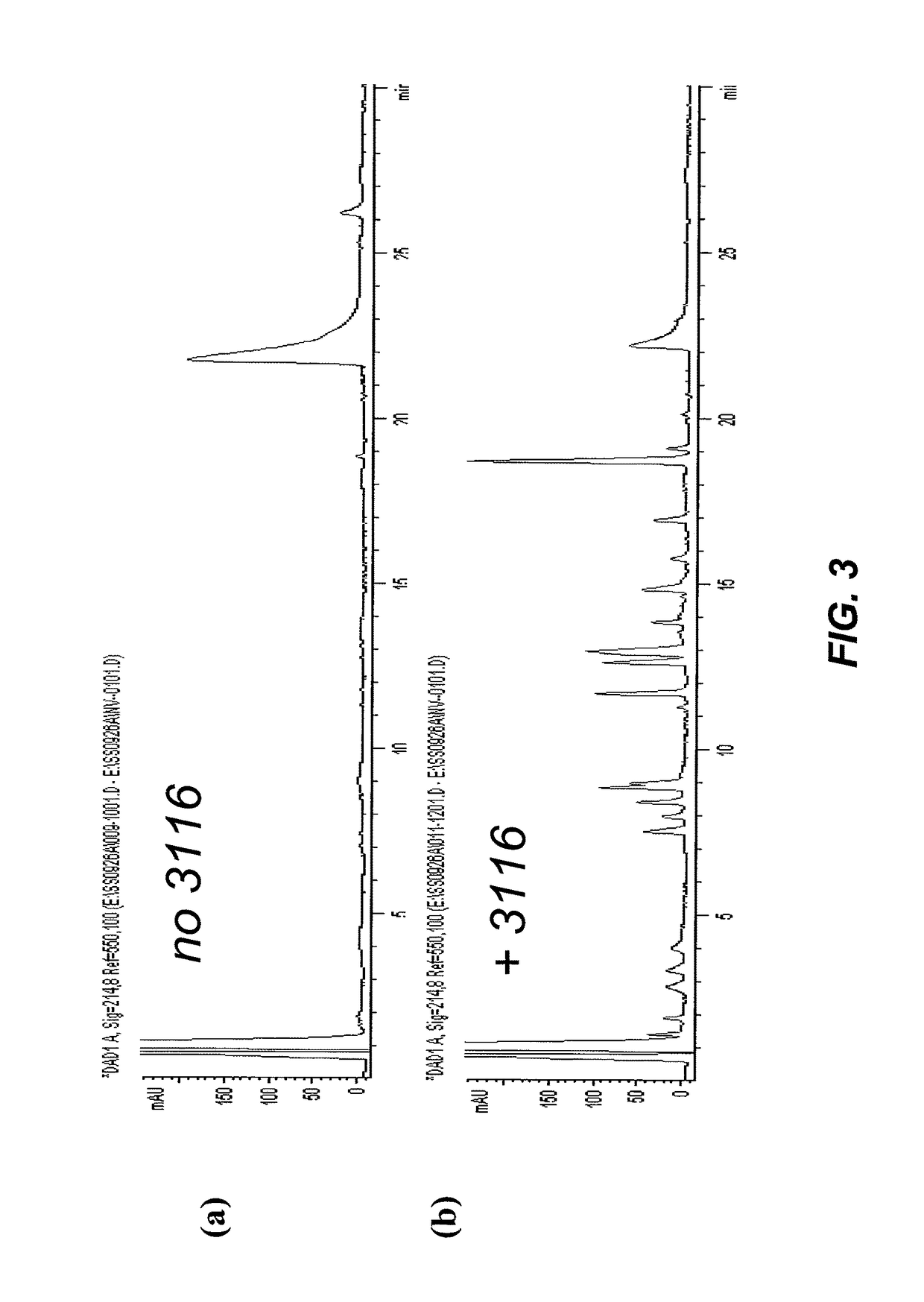Cleavable surfactants
a surfactant and a technology of surfactants, applied in the field of cleavage surfactants, can solve the problems of affecting the subsequent analysis, the presence of surfactants or denaturants, and the inability to conform to the current method and reagent applied in one step, and achieve the effect of improving the deglycosylation of enzymatic proteins
- Summary
- Abstract
- Description
- Claims
- Application Information
AI Technical Summary
Benefits of technology
Problems solved by technology
Method used
Image
Examples
example 1
on of Compound 3116
[0222]
[0223]Methyl laurate (2.0 g, 9.33 mmol) was dissolved in 20 mL of anhydrous THF and the solution was cooled in an ice-water bath. A solution of 3M methylmagnesium chloride in THF (6.5 mL, 19.6 mmol) was added dropwise via syringe and the stirred reaction mixture was allowed to warm to ambient temperature and react for 4 hours. The reaction mixture was poured into 50 mL of 2M aqueous sulfuric acid solution and was extracted with ethyl acetate. The organic extracts were dried over anhydrous sodium sulfate and concentrated to give 2.0 g (99% yield) of 2-methyl-2-tridecanol as a colorless oil.
[0224]MS (ESI+): m / z 215.4 (MH+).
[0225]The 2-methyl-2-tridecanol (0.36 g, 1.68 mmol) was dissolved in 1 mL of pyridine and 2 mL of THF. The solution was cooled in an ice-water bath and p-nitrophenyl chloroformate (340 mg, 1.68 mmol) was added and the reaction was allowed to warm to ambient temperature and react overnight. The reaction mixture was roto-evaporated and the res...
example 2
on of Compounds 3211 and 3212
[0230]
[0231]2-Furaldehyde (13.4 g, 0.14 mol) was dissolved in 500 mL dry THF and the solution was cooled to 0° C. Decyl magnesium bromide (150 mL of a 1.0 M solution in diethyl ether, 0.15 mol) was added dropwise to the cooled solution, and the reaction allowed to stir overnight. TLC analysis (4:1 ethyl acetate-heptane) indicated the reaction was complete. The reaction mixture was quenched with butanol, followed by water and the mixture was filtered through a sintered-glass funnel and concentrated. The crude product was purified by chromatography on silica gel using a mixture of 4:1 heptane-ethyl acetate to provide 29.7 g (89% yield) of 1-(furan-2-yl)undec-1-ol.
[0232]1-(Furan-2-yl)undec-1-ol (4.0 g, 16.8 mmol) was dissolved in 150 mL dry THF and cooled to 0° C. p-Nitrophenyl chloroformate (6.76 g, 33.5 mmol) was added and stirred to dissolve. Pyridine (15 mL) was added dropwise over 20 minutes and the reaction was allowed to stir 1 hour, then analyzed by...
example 3
on of Compound 3266
[0235]
[0236]3,4-Dimethoxybenzaldehyde (3.15 g, 19.0 mmol) was dissolved in 100 mL dry THF and the solution was cooled to 0° C. Dodecyl magnesium bromide (20 mL of a 1.0 M solution in diethyl ether, 20 mmol) was added dropwise to the cooled solution, and the reaction allowed to stir overnight. TLC analysis (4:1 ethyl acetate-heptane) indicated the reaction was complete. The reaction mixture was quenched with water and the mixture was filtered through a bed of Celite (diatomaceous earth) with heptane-ethyl acetate washes and then evaporated. The crude product was purified by chromatography on silica gel using a mixture of 3:1 heptane-ethyl acetate to provide 5.1 g (80% yield) of 1-(3,4-dimethoxyphenyl)undecan-1-ol.
[0237]1-(3,4-Dimethoxyphenyl)undecan-1-ol (2.3 g, 6.8 mmol) was dissolved in 20 mL dry THF and to the solution was added p-Nitrophenyl chloroformate (1.64 g, 8.2 mmol), followed by pyridine (2.0 mL). The reaction was allowed to stir 3 hours, then analyzed ...
PUM
| Property | Measurement | Unit |
|---|---|---|
| temperature | aaaaa | aaaaa |
| temperature | aaaaa | aaaaa |
| temperature | aaaaa | aaaaa |
Abstract
Description
Claims
Application Information
 Login to View More
Login to View More - R&D
- Intellectual Property
- Life Sciences
- Materials
- Tech Scout
- Unparalleled Data Quality
- Higher Quality Content
- 60% Fewer Hallucinations
Browse by: Latest US Patents, China's latest patents, Technical Efficacy Thesaurus, Application Domain, Technology Topic, Popular Technical Reports.
© 2025 PatSnap. All rights reserved.Legal|Privacy policy|Modern Slavery Act Transparency Statement|Sitemap|About US| Contact US: help@patsnap.com



